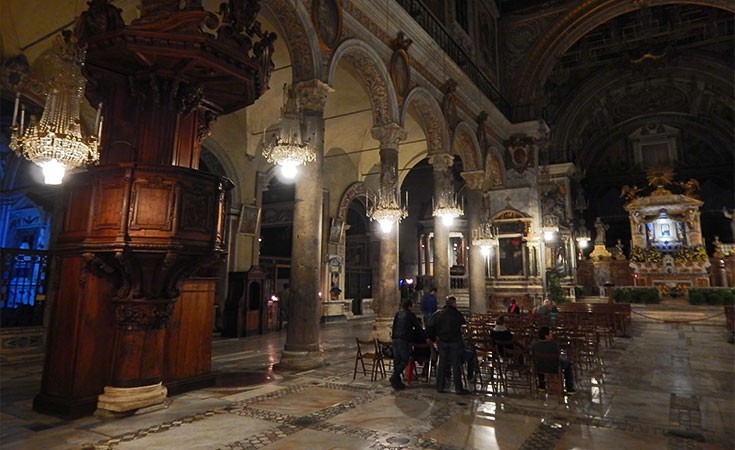
This basilica is located on the Capitol Hill, right behind the Vittoriano monument on Piazza Venezia. Many interesting stories relate to this church that draws a vast number of tourists and pilgrims who want to satisfy their curiosity or even ask for a miracle.
Basilica Santa Maria in Aracoeli is located on the top of the Capitol Hill in Rome (one of 7 famous hills in the city). The church was built in the 6th century and was originally called Santa Maria in Capitolio.
According to the legend the church was built on the spot where Augustus, the first Roman Imperator, had a vision of a mother with a child in her arms, and had a prophecy of Christ’s arrival. This is the reason why centuries later the church was renamed to Ara coeli or “Altar of Heavens”.
The church can be reached from the steps that lead directly to it on the right side of the Vittoriano monument on piazza Venezia, or from the first level terraces of the same monument. These 124 steps were constructed most probably in the 14th century.
(!) Steps that lead to the church are long and offer a nice place for tourists to sit and have a break from the long walk and enjoy the view. However, be aware that this is an attractive place for thieves as well. The usual tactics are to sneak up to people, take their bags and walk or run away. Take the warning seriously because this is exactly what happened to the journalists of TravelandBack, and something that happens to hundreds of tourists every day in Rome.
Ticket prices for Church Santa Maria in Aracoeli
The entrance is Free of charge.
Working hours of Church Santa Maria in Aracoeli
From May to September working hours are: 09:00-12:30 / 15:00-18:30h.
From October to April working hours are: 09:00-12:30 / 14:30-17:30h.
Interesting facts